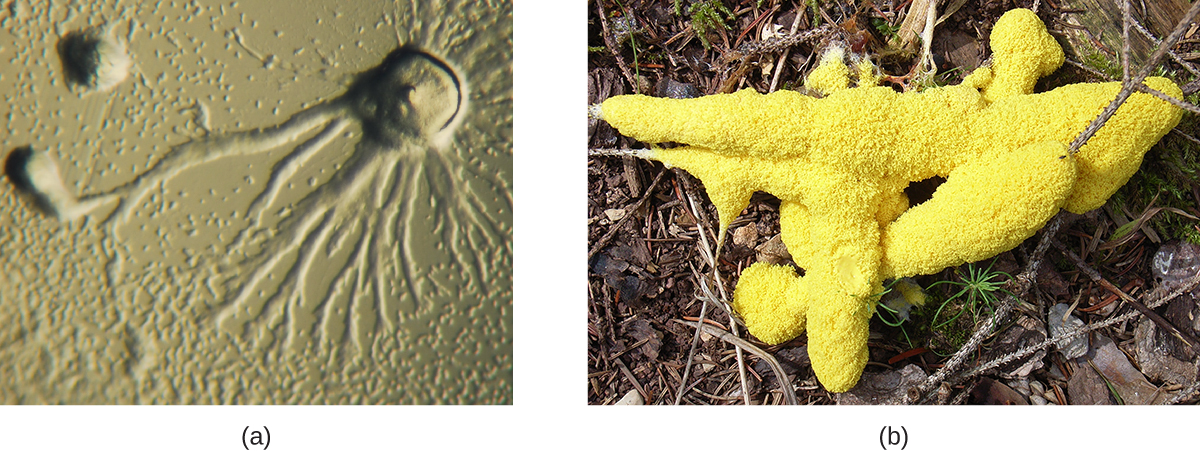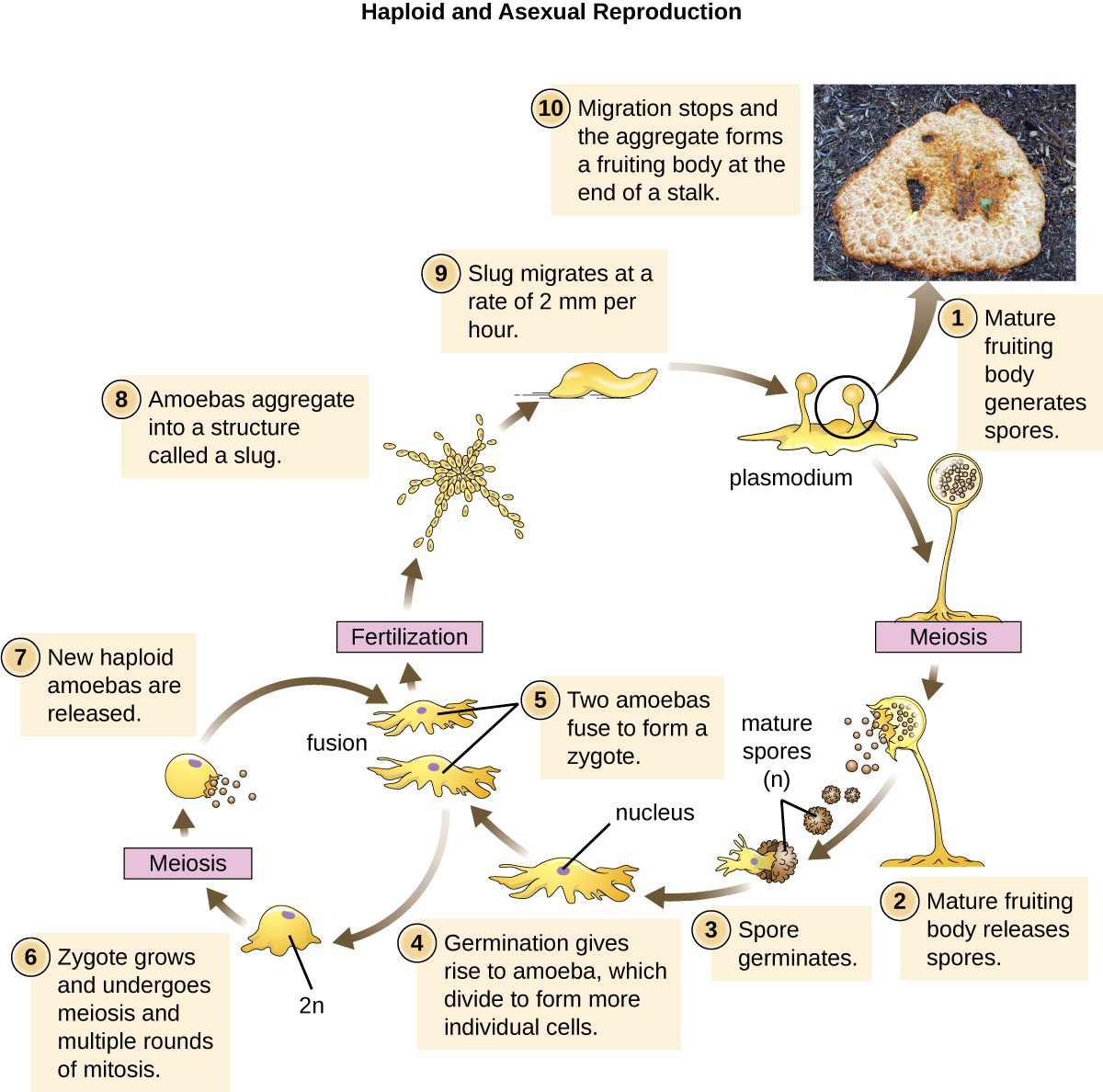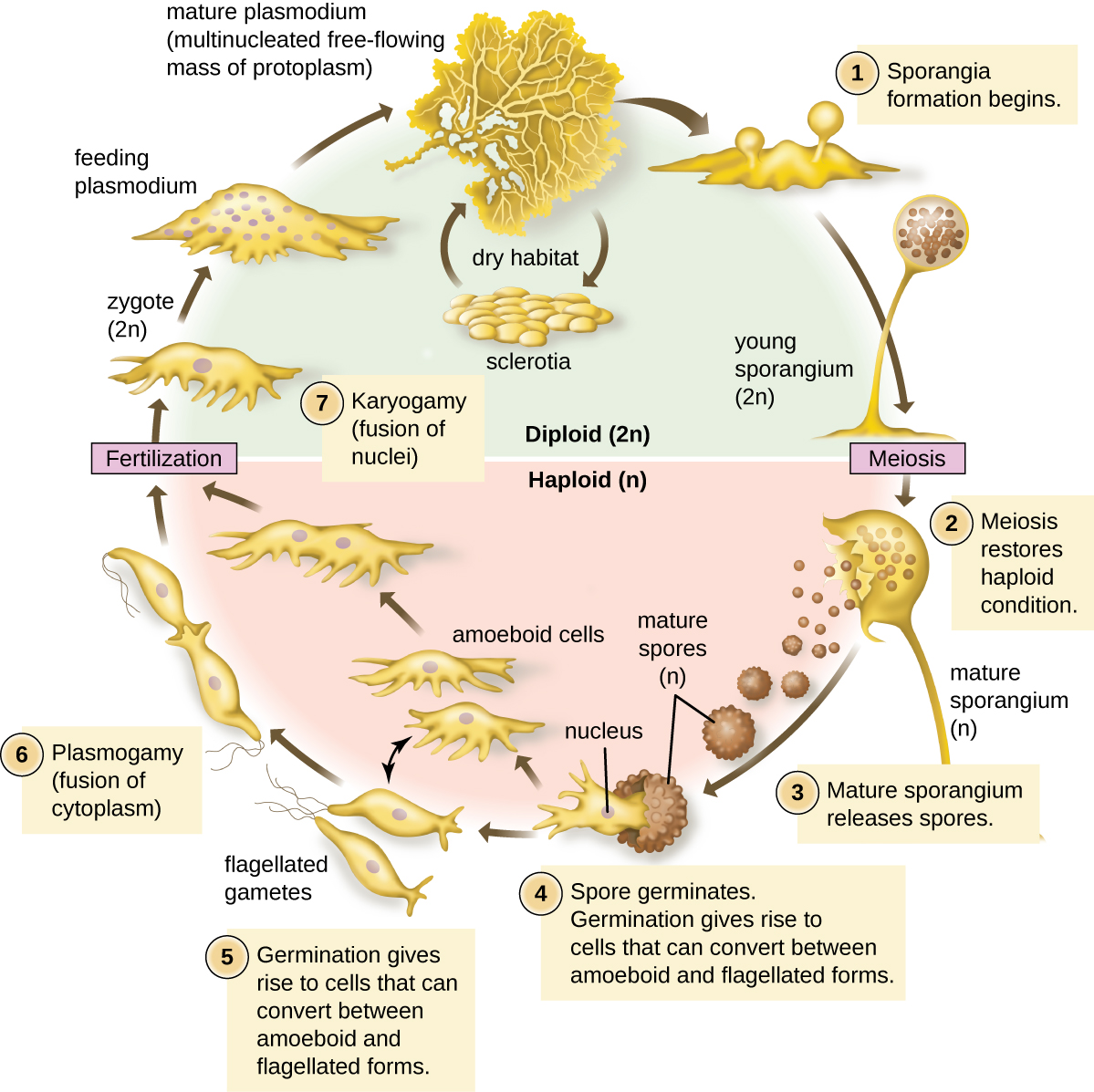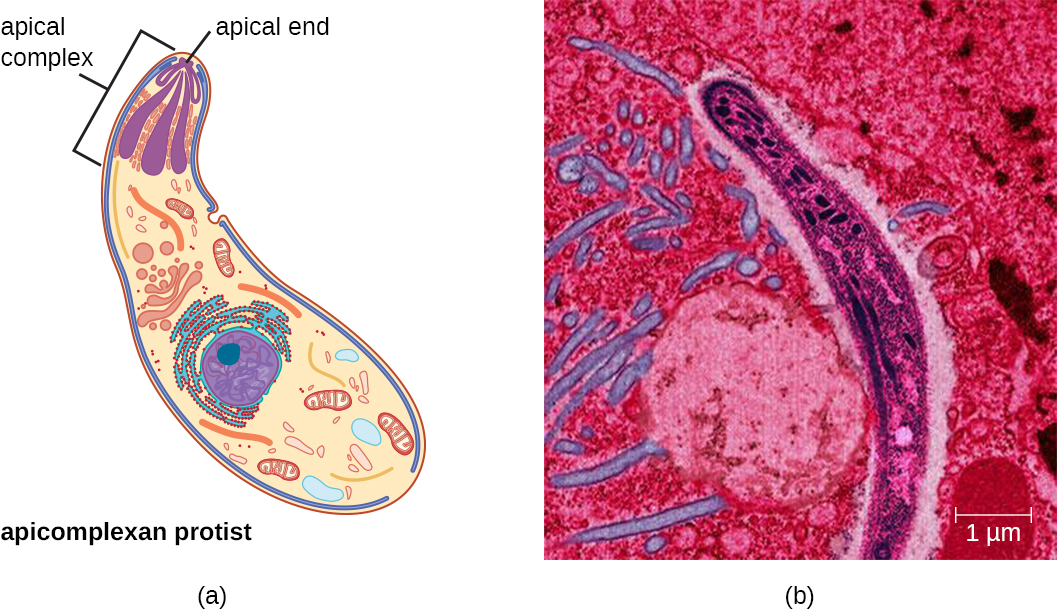| << Chapter < Page | Chapter >> Page > |
The Eumycetozoa are an unusual group of organisms called slime molds , which have previously been classified as animals, fungi, and plants ( [link] ). Slime molds can be divided into two types: cellular slime molds and plasmodial slime molds . The cellular slime molds exist as individual amoeboid cells that periodically aggregate into a mobile slug. The aggregate then forms a fruiting body that produces haploid spores. Plasmodial slime molds exist as large, multinucleate amoeboid cells that form reproductive stalks to produce spores that divide into gametes. One cellular slime mold, Dictyostelium discoideum , has been an important study organism for understanding cell differentiation, because it has both single-celled and multicelled life stages, with the cells showing some degree of differentiation in the multicelled form. [link] and [link] illustrate the life cycles of cellular and plasmodial slime molds, respectively.



The supergroup Chromalveolata is united by similar origins of its members’ plastids and includes the apicomplexans, ciliates, diatoms , and dinoflagellates , among other groups (we will cover the diatoms and dinoflagellates in Algae ). The apicomplexans are intra- or extracellular parasites that have an apical complex at one end of the cell. The apical complex is a concentration of organelles, vacuoles, and microtubules that allows the parasite to enter host cells ( [link] ). Apicomplexans have complex life cycles that include an infective sporozoite that undergoes schizogony to make many merozoites (see the example in [link] ). Many are capable of infecting a variety of animal cells, from insects to livestock to humans, and their life cycles often depend on transmission between multiple hosts. The genus Plasmodium is an example of this group.


Notification Switch
Would you like to follow the 'Microbiology' conversation and receive update notifications?